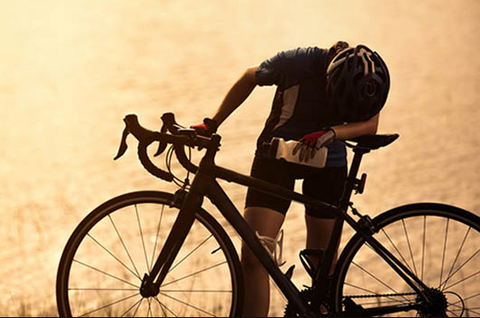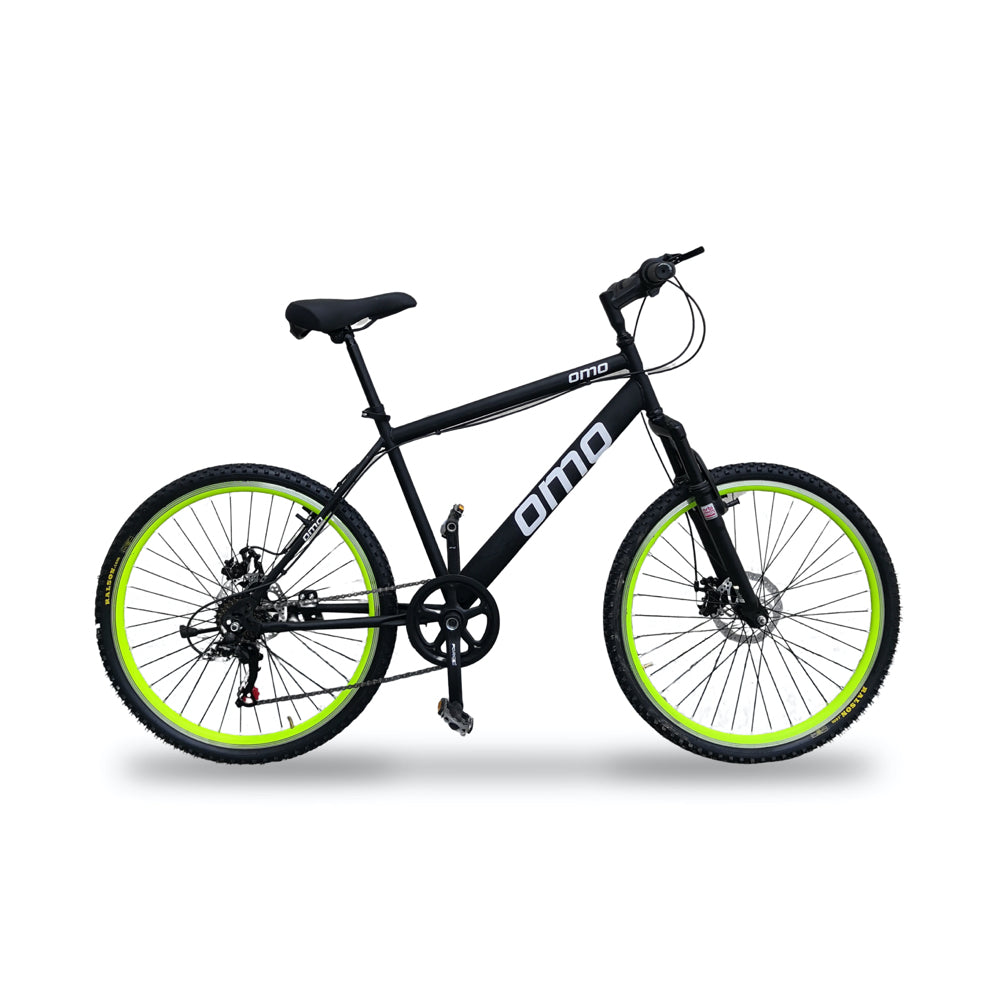A Complete Guide : Why Hydration is Important as A Cyclist?
OMO BikesShare
If you have found yourself planning out the route of a long weekend ride or preparing for the more important Bicycle race then I’m sure more planning has gone into what you will wear or what you would feed the cycle and most of all the strategy but more so the lack of it for the slightly heavier hills. Nevertheless, hydration can be viewed as something very secondary and unimportant.
The reality is that it has been found that even 1% of persons in a dehydrated state will make you perform poorly on a cycle ride, which should make you give a second thought to what, when, and how much you are drinking.

A little extra preparation when it comes to your fluids on the bike could very well be the change that you need to allow for enhanced Bicycle riding, less soreness, and more endurance meaning more fun and less complaining while cycling.

What happens when you’re dehydrated on a bike ride?
The British Nutrition Foundation confirms that even 1% of the body’s water loss causes some detrimental changes in the body – the same holds for cycling form and endurance. The side effects are always worse as one becomes more dehydrated than before.
Data collected from British Cycling indicates that only 4% of dehydration will reduce muscular work ends. 5% can lead to heat cramps, 7% – heat exhaustion, and 10% may lead to hallucinations, circulatory collapse, heat stroke, severe dehydration, and in extreme cases death.
Although you’re unlikely to reach severe dehydration, even mild to moderate dehydration during a ride can lead to noticeable symptoms such as:
- Dry mouth
- Headache Inability to concentrate – which can be catastrophic when on the road amidst traffic.
- Higher body temperature – for the same reason as above, your body is unable to release as much heat so your body temperature rises. For instance, you can get convinced that your heart rate, metabolic rate, and breathing rate all stand to be higher.
- Dehydration – as your sweat rate declines when you are deprived of fluids, your body temperature can rise – and by all means, cycling is a lot more challenging when you are hot.
- Muscle cramps – it is still debatable as to what brings about muscle cramps, though lack of enough water can be an explanation.
- Nausea
- Fatigue – the body's glycogen stores will be utilized by dehydration therefore using up energy resources faster and causing faster fatigue during the ride.

How do you know when you should rehydrate during your Bicycle Ride?
The adage of ‘drink to thirst’ is a good guide, but it does not apply when you are on the bike. If you’re riding in the heat and during such conditions, especially at higher rates of effort and especially for longer bouts of cycling, you might require fluid intake even if you don’t feel as if you do. You’re not just drinking for now you’re drinking for 10-20 miles down the road.
There are the following strategies you can use to monitor your hydration:
- THIRST
If you are dehydrated you will have a feeling of thirst. But please remember that you will not even get a hint that you need water until you are a little bit dehydrated. If you’re on the bike, just try to hydrate yourself from the morning before you head off on your bike so that the moment it attacks you, you can contain it.
2. THE URINE TEST
The next time you visit the toilet, try to take a close look at the color of your urine. It should have a pale straw color. If it’s bright yellow or orange, and you need to drink more. By making sure your daily general needs are met enough it becomes very easy to do the same during training.
3. THE SWEAT LOSS TEST
It will help you determine how much you sweat during a session after you have measured your body weight before a session and after the session. From this weight loss, you can understand how much you should be drinking on your rides in order to achieve the aim of hydration.

What should you drink before, during, and after a bike ride?
How much to drink before a Bicycle ride?
When it comes to hydration for cycling, there’s no need to drink a large amount before you set off on a ride. It’ll just mean more loo stops. Instead, aim to stay well hydrated the day and the morning before. This makes maintaining optimal hydration on the bike much easier.
The NHS advises the population to drink 1.2 liters of fluid daily in order to replace normal water loss but the actual requirement varies depending on the weight, activity level, temperature, and other genetic factors. If you are an active person, your water consumption should be approximately 2-3 liters if you are undertaking your exercise regime.
An electrolyte drink is also advisable to be taken before a long ride, race, or before a strenuous training program. Electrolytes are some of the salts and minerals in the blood which are lost as the body sweats. Electrolyte changes are likely that lead to pathology; There might be muscle weakness and spasms, fatigue, confusion, and dizziness.
We recommend taking on 500ml of electrolyte drink 1-2 hours before prolonged or intense exercise and 150-200ml immediately before you begin.
How much to drink during a Bicycle ride
Aim to drink a little and often during your bike ride. Take 2-3 gulps from your bottle every 10-15 minutes – more on hotter days. Start drinking from the very beginning of your ride rather than waiting until you feel thirsty.
For most shorter rides: For rides up to around 60 minutes and lower intensity sessions, drinking water is enough.
For longer rides, races, and on hot days: You’ll also need to take on electrolytes to replace what you lose through sweat. Maintaining a good electrolyte balance aids hydration and helps you perform at your best.
Mix an electrolyte powder, such as Electral, Fast&Up electrolyte fizz, or ORS which is easily available anywhere, you can mix it with water and take 2-3 good-sized gulps from your bottle every 10-15 minutes.
How much to drink after a Bicycle ride?
Meaning after you’ve pedaled hard in that cycling you will still be sweating and losing water for some time, and you need to replenish the energy you have used. This will assist to resolve and rest your body from the procedures that it has gone through to handle the stress you were under.
Ideally, you should aim to take on 150% of the fluid you’ve lost through sweat within one to four hours. However, take your time over this as you don’t want to end up feeling bloated and nauseous.
Take 500ml of electrolyte drink to get your electrolytes back in balance. Need to add some carbs or protein shakes for recovery, and you must add some rich protein to your diet like chicken, cheese, or soya chunks it helps you to help your body repair, rebuild, and recover.

What is the best way to hydrate for cycling?
In summary, here’s our three-point hydration hit list for the best way to hydrate for cycling:
- Ensure you’re well hydrated day to day, and drink regularly on the bike – right from the beginning of your ride.
- Take an electrolyte drink on hot days and ride over 60 minutes.
- You should also aim to take on 150% of fluid lost through sweat four hours after your ride as well as electrolytes, carbs, and protein for optimal recovery.

Types of cycling drinks
As any cyclist will attest, there is a whole string of products in the form of drinks intended for cyclists and each one of them is branded with the label ‘helps you perform better’. With all these options available there is always confusion as to what one requires and at what time.
Let's discuss it one by one.
Best cycling drinks for hydration
For rides up to 60 minutes: Water will provide all the hydration you need.
For longer rides, tough sessions, and hot days: Fast&Up Reload, Gatorade Thirst Quencher Powder, and MuscleBlaze Isotonic Instant Energy are some very premium brands in India that make mainly into in industry but an emergency point of view you can also use electrical and ORS which is easily available in any medical store.
When mixed with water, the hypotonic mix is designed to provide rapid rehydration and keep your electrolytes in balance so you can perform at your best.
Best cycling drinks for an energy boost
If you prefer to drink rather than eat your carbs on the bike, you could try carbohydrate energy drinks.
Often found in powder form to be mixed at home, the carbohydrates can come from several different sources such as sucrose, glucose, and fructose.
If you’re riding for longer than an hour, you should aim to take on 30-60g carbohydrates every 60 minutes by eating real food or sipping from a carbohydrate drink at regular intervals, you can use a product like steadfast Carborance and Fast&Up charge plus, or you can make your own homemade drink for energy boost.
Best cycling drinks for recovery
Water is the simple way to rehydrate for recovery, but taking on an electrolyte drink and/or protein recovery shake can help replenish depleted energy stores, rebalance electrolytes lost through sweat, and provide protein to aid muscle repair. BCAA (Bio-Chain amino Acid) is also a very good option for Recovery, which is easily available in any online and offline food supplement store.
Bonus cycling hydration tips
- Drink little and often: aim for 2-3 gulps of water or electrolyte drink every 10-15 minutes.
- Stay hydrated day to day: It’ll give you a much better chance of maintaining hydration on the bike.
- Don’t drink too much: We’ve all heard the horror stories of hyponatremia – where people (often marathon and ultra-runners) drink too much water in endurance events. Drinking too much can be an issue on the bike too, severely diluting the sodium level in the blood and causing bloating, nausea, and in severe cases seizures and death.
- Replace lost salts: Among other benefits, electrolyte drinks help prevent hyponatremia, as you’re replacing sodium and lost electrolytes as you go rather than affecting the balance of your body’s fluids.
Practice hydration in training: You don’t want to suffer dehydration or stomach pain on race day, so experiment with your hydration strategy and products in training.
I hope this blog will clear a lot of confusion related to Hydration and Recovery but if still you need any help please let us know for same, we love to help you out by Best Cycle in India.
MEANWHILE, RIDE HARD & RIDE SAFE

